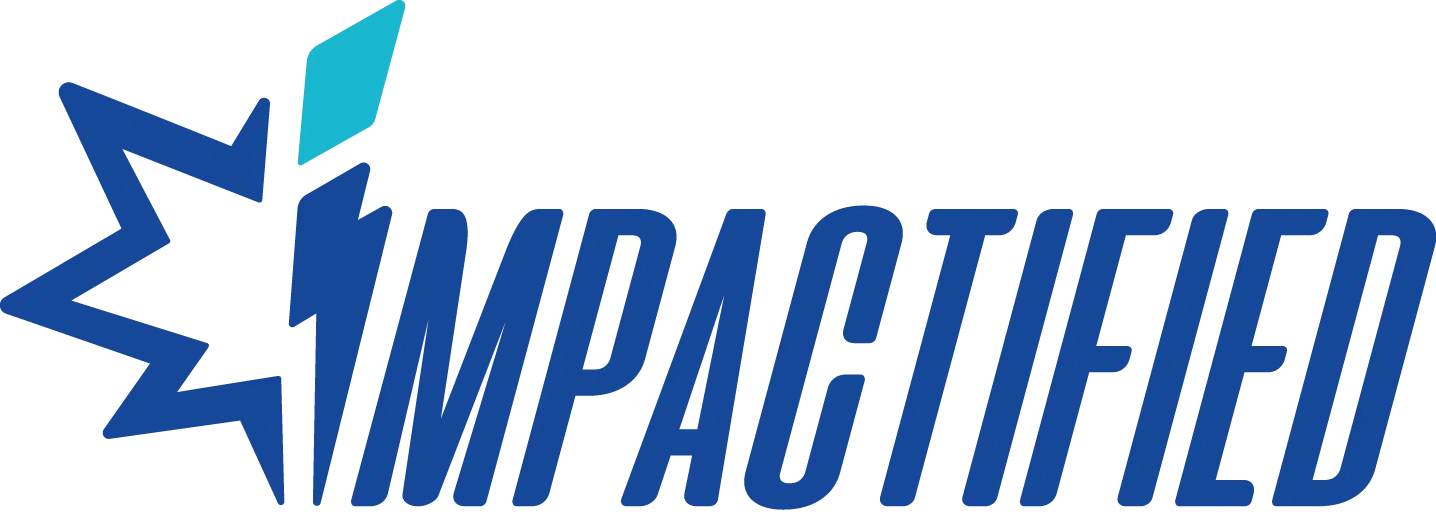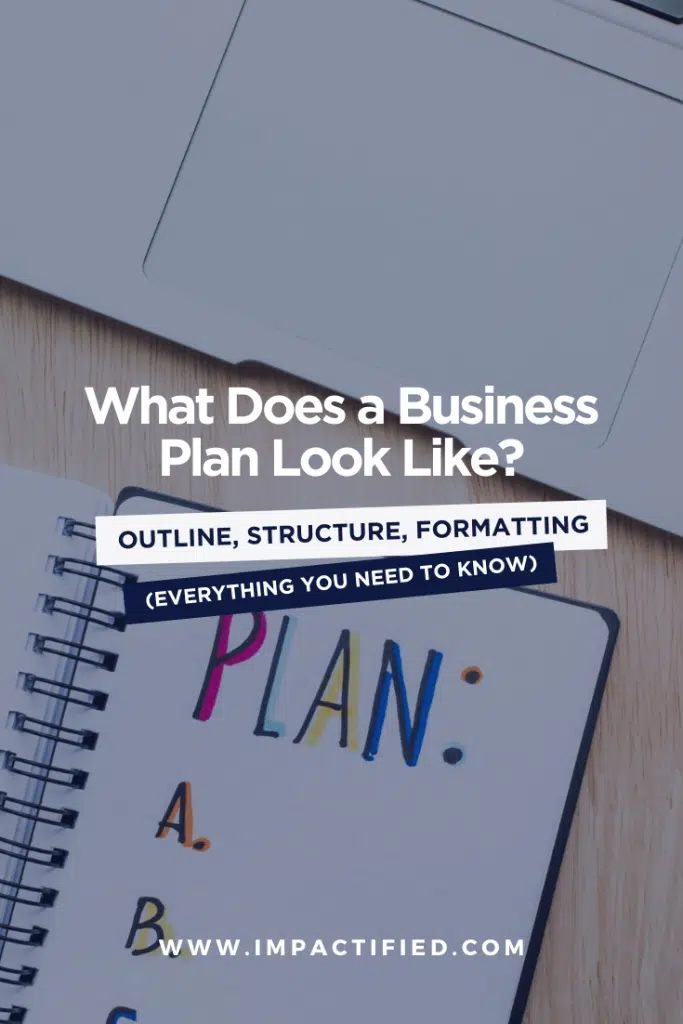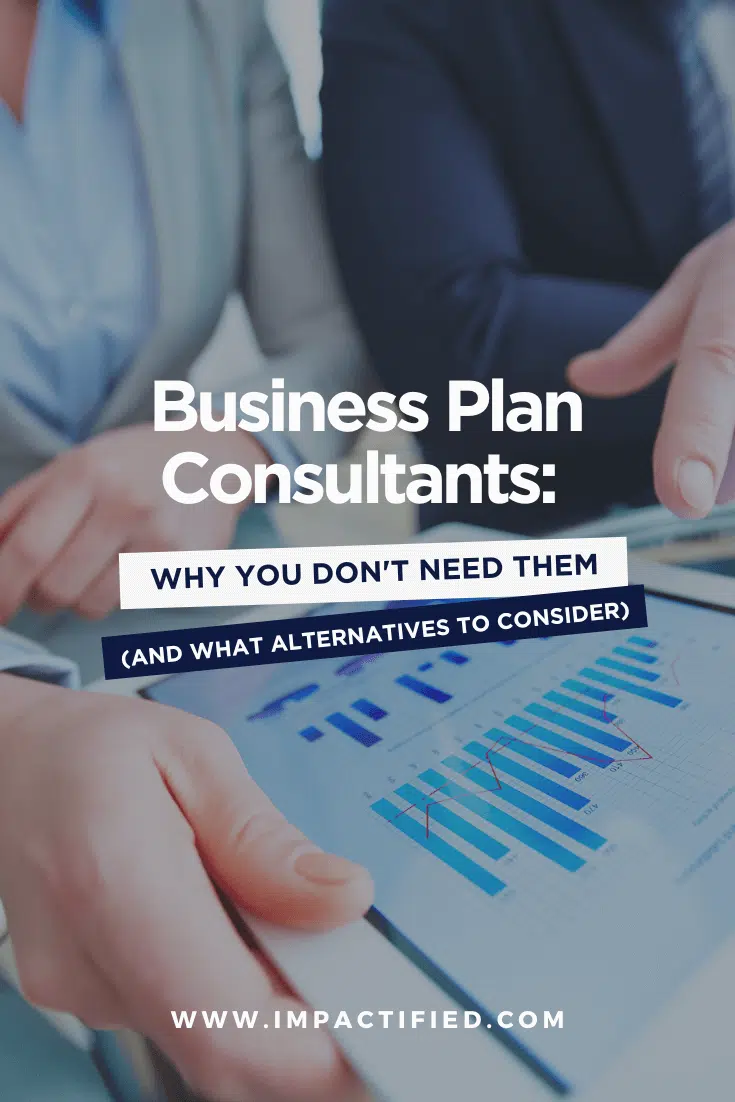Working on a business plan isn’t easy for most business owners. Still, on many occasions, small businesses have no choice but to go through the process. And, when they do that, they get confronted with questions related to outline and formatting.
As entrepreneurs and business coaches ourselves, we know the significance of this issue. We know that it tends to get people stuck real bad. And we know that the impact can be pretty bad from a time, money, and motivation perspective.
Exactly.
So, we decided to share a few business coaching tips that have proven helpful to our clients (and to us).
Far from being “just” a matter of aesthetics, the outline and the format of a business plan are two critical points. Why? Because an effective business plan must follow a code, your audience will expect you to know that code, and your job is to make the most of it.
In this article, I am going to explain the ins and outs of business plan construction and delivery, and I’ll give you tons of tips as to how you can make the most of that code.
I will talk about outlines and list the typical components of a business plan you really can’t miss. Then I’ll talk about formatting and looks.
I’ll also give you some tips on efficient presentation. And I’ll finish with some thoughts on pitching and storytelling that you a-bso-lu-tely need to consider if you want to give your business a chance.
Before we dig into the topic, though, please keep in mind three important points!
First, this article will not explain what business plans are and why they are important to your business. Long story short, a business plan is a storytelling tool that you should use to do some serious business planning, and it is pretty pointless if you don’t have a business with a plan in the first place. I have comprehensively covered this topic in a previous article, so please follow the link I just provided if you need a refresh.
Second, this article is part of a comprehensive series of blog posts on business plan writing that we’ve made available on Impactified. We’re trying to make your life easier with these, so give them a look!
Third, if you wonder how to write your business plan without losing your time and breaking the bank, search no more. Our best-selling Business Plan Builder tool and video tutorials are what you need.
The module includes a complete business plan template, two designer-made decks, a work tool to get you started and tell you what to write (and how), the automated financial tables you’ve been dreaming of, and over two hours of video that take you by the hand! So if writing a business plan is a topic for you, you have no excuse!
Now, back to our topic: business plan outline, business plan format, what does a business plan look like, and how can you ensure that yours will make sense?
What Does a Business Plan Look Like?
So, first things first, what does a business plan look like? As I’ve said earlier, a business plan is essentially a document that tells a reader everything you want them to know about your business. Still, the point is not to just produce a bland business description or a complicated set of financial statements.
Did you notice I just wrote “everything you want them to know”, not “everything they want to know”? That’s because the point of the exercise is to use the document as a teaser. That teaser then gets you into a more profound series of discussions in which you have the time to get into the details and answer the questions they want to ask.
Said differently? A business plan is based on two primary dimensions: the outline and the formatting.
What difference is there between outline and formatting?
You see where I’m going here: outlines and formatting are two different things you can’t afford to confuse. Can you tell what that difference is about, though?
First, the outline relates to the substance you want to provide and communicate. A business plan outline typically follows a very codified set of rules that business owners tend to follow because investors, bankers, and partners expect these rules to be followed to save time and get straight to the point in their discussions. See it as a guide!
Second, formatting relates to how you package and present the information to your audience.
I’m not talking about ordering the topics correctly here – that’s the outline part. What matters with business plan formatting is the length of the document and the way it is written and illustrated. Not to forget, of course, your ability to shape and reshape the same content into different types of documents depending on whom you are talking to.
Typically, your outline (the various topics to be discussed) won’t change. Still, it has to be displayed in a comprehensive report format or into a very synthetic set of slides that you’ll be able to use as a pitch deck.
What Does a Business Plan Look Like?
A business plan is a document that:
- Outlines the characteristic points of your business following a very codified set of topics
- These topics can be displayed in different formats (comprehensive report or pitch deck) depending on your interlocutor.
How do I build a business plan outline that makes sense?
Now. Having clarified the difference between business plan outline and business plan formatting, let’s dig into each point separately. Starting with defining an outline that makes sense.
Key takeaway: a business plan outline should give your document a structure that’s easy to follow by the reader because the topics follow each other and flow from each other.
Because the structure is logical, the reader can read the document in depth or skim through it. Whatever their choice, the story should be logical and easy to process, understand and remember.
There is a catch here, however.
You can only achieve a satisfactory result if you ditch the usual BS (excuse my French) to focus on the real stake: business planning and business development.
Ditching the BS to focus on the real issue
Before I give you the typical outline you should be using in your document, let me (re)clarify an essential point I made in another article where I explained what your business plan should be about.
Ready?
Nobody gives a damn about your business plan if all it is a plan without a business.
There you go. A business plan is only a tool. And while most business owners try to get rid of the exercise as fast as possible, you should use it as the best opportunity ever to write a strategic plan for your business and set a direction.
Yet, most business owners do things the other way around. And they struggle with defending their project (and raising capital for that matter) because storytelling is only possible if you have a story to tell.
The 7 components of a business plan outline that convert
Having clarified this, the business community has over time codified what needs to be in a business plan outline, so you don’t have that much wiggle room.
In fact, the only way is to follow a code, and the code says that your business plan should include the following seven components:
- An executive summary
- A big picture presentation of the issue solved by the business
- A description of your offering
- A go-to-market strategy presentation
- An operations presentation
- A team presentation
- Your financial projections and the corresponding financial documents & cash flow projections
Now, this structure is there for a reason.
When put together in this specific order, these points are the seven key components of a business plan outline that converts people. Why? because they tell a story that flows and can be processed quickly by whoever reads the document. Even if they are not a professional investor.
Business idea, products and services description, target market and target customers, market research, market analysis and competitive analysis, marketing plan, sales projections, management team, financial plan (P&L, cash flow statements, and balance sheet)… All that has to become exciting and inspiring.
Shameless plug: if you are looking for simple business plan templates that (i) guides you through the whole process with a working document, (ii) tells you precisely what to focus on for each of the points we just listed, (iii) provides you with a set of designer-made outputs, and (iv) comes with two hours of explanatory videos by a business coach – then The Impactified Business Plan Builder module is the tool you need. Give it a try!
How to write a business plan outline that converts?
- Make sure to identify the 7 typical components of a business plan outline
- Answer each point precisely
- Link each element to the next to tell the reader a logical story
Should I keep the business plan sections in that specific order?
Typical question but very relevant nonetheless.
Yes, you should keep the business plan sections I just provided in that specific order. Why? Because, as I just said, it gives a logical structure to tell a story about your business.
Now, of course, this structure gives you your final business plan outline. Still, you can always deal with the various points in the order you prefer as far as preparation is concerned. As long as the final document follows the code, you should be fine.
Having said this, we always suggest that you start from the big picture, explain the problem and the solution, then the strategy and the operations. It’s not always obvious, but writing your executive summary last also makes a lot of sense.
The same applies as far as the financial projections and financial planning part of the business plan is concerned: feel free to work on it at your own pace, but follow the code and give your reader what they expect.
And again – forgive the repetition here – the point is not to write some BS to get rid of a tedious exercise. It is to figure out what makes your business worth putting money into, and it is to show whomever you are trying to convince that you have (i) a business and (ii) a real plan for that business.
So? Leverage the code!
A reminder of the typical business plan sections
- An executive summary
- A big picture presentation of the issue solved by the business
- A description of your offering
- A go-to-market strategy presentation
- An operations presentation
- A team presentation
- Your financial projections and the corresponding financial documents
Is there a typical business plan format?
All right! So, now that we have clarified the business plan outline stakes, let’s move to the second focus point: the typical business plan format you’ll want to use.
As I’ve mentioned before, there is what needs to be in a business plan, and there is the way to package and display that information in a way that conveys the right message.
This point is critical but often overlooked by business owners who want to save time and costs. That’s a shame, though, because by doing this, they deprive themselves of a real opportunity to be read, listened to, and taken seriously.
Think about it for a second.
Imagine your potential investor or banker and then walk a mile in their shoes. Is your business plan the only one they will have to read today? Probably not.
So, tell me. What’s going to happen to your document if it is nothing more than a bland and neverending pdf amongst a dozen or more?
Hmm. See my point?
Awesome. So, well, here are two hints you might want to consider and leverage.
Hint one: make your business plan sexy to read
Forget the traditional business plan document printed in black on white that never ends and puts you under the pile (not to say in the bin) because it wasn’t written with a specific reader in mind.
Instead, opt for a short version, with illustrations and as little text as possible, designed to be read easily. Your business plan needs to be a sexy read!
One page for one topic.
Minimal amounts of text – calibrated to send a precise message.
And some powerful storytelling that makes people want to ask more questions about your business. That’s it!
Hint two: adapt your business plan to your audience
You really want to adapt your business plan’s format to your audience.
Bankers don’t think like investors. Bankers want to be repaid fast and want stability. In contrast, investors want to see potential because they invest in making a profit later on.
Hence, a business plan written to obtain a bank loan should not be written like a business plan written for an investor. And your job is to adapt your storytelling to ensure the right message is conveyed to the right interlocutor.
Likewise, adapt the length and the style of your document. Some will want to read a report-shaped document that gives information to chew on. Others will prefer a one-page business plan or a slide-based pitch deck that only gives a big picture summary of your project business proposal.
Shameless plug (yes, again), the Impactified Business Plan Builder contains a set of videos that will explain all those nuances in detail. And it will provide you with the tools you need to (i) build a calibrated document that goes to the point and (ii) put it in shape with very visual and fully customizable designer-made templates.
In the end, formatting depends very much on the audience you have in mind and is totally up to you.
But, since you are reading this page, our suggestion to you is very straightforward: avoid endless pages of black text on a white page, opt for a designer-made template, and make sure to calibrate your content to convey a message they will remember rather than a message they’ll send to the bottom of the pile. Period.
What is the typical business plan format?
- It depends on the reader’s expectation (report, one-page, pitch deck)
- Avoid endless pages of black text on white pages
- Opt for a designer-made template
- Make sure to calibrate your text to convey a message they will remember
5 Tips for an efficient business plan presentation
So, I’m nearly done here, but before we get to wrap things up, I wanted to give you five final tips for an efficient business plan presentation.
One, take the business plan outline suggestions we made previously very seriously. And make sure that your formatting shows off your outline with a clear design. One page, one topic, that’s it.
Two, define in advance what you expect from your business plan presentation. If the plan is to raise capital from an investor, do your research. Figure out what presentation style will work best for them (report, pitch deck, one page business plan), and make sure that they leave with a clear understanding of your story, otherwise, your company doesn’t stand a chance.
Three, give equal importance to the seven typical components of a business plan outline. Don’t overlook any of them because they all have a role to play. For example, if your business solves no specific problem or has no particular offering, investors will have no potential to see. And if you see a problem to solve but can’t show any convincing numbers, then there won’t be any potential either.
Four, as much as possible, avoid working on a business plan at the last minute, just because you need money. No, you can’t avoid that step. Still and again, the point is not to produce a quick pdf. It is to show that you have a viable business, with a viable plan. And your job is to turn that into a very clear and very inspiring storytelling opportunity!
Last but not least, train, train, and train more! A good business plan presentation depends on the quality of your content. Still, the way you convey the message is also critical, and repeating your pitch multiple times makes the difference in the end. Investors look for leading and inspiring partners, not boring ones!
5 business plan presentation tips
- Leverage the typical outline, and format it properly
- Know what you expect
- Don’t overlook any topic
- Build storytelling, storytelling, storytelling
- Train, train, train!
Wrap up: Set the proper business plan outline and build storytelling
Time to wrap up. Your business plan presentation will be seen as convincing if your pitch follows a codified logic people expect to hear and if it provides an inspiring story people will want to remember.
The good news is that you can’t have inspiring storytelling without a logical outline that goes methodically through the essential components of a business plan. So, starting there will give you all the information, the logic, and the storytelling you need! Easy as 1, 2, 3!
The Business Plan Builder: 2 hours of tutorial videos and the tools you need to get started
And again, if you are looking for a push to get started with your business plan, we – at Impactified – have built The Business Plan Builder – THE tool you have been dreaming of.
The Builder comes very handily, in the shape of a Module built around over 2 hours of explanatory videos and a package you’ll be able to use to
- Figure out what you need to figure out – powerful, uh?
- Understand the business plan code
- Write your business plan – with just the right number of words and pages
- Build your financial estimates – with an automated table
- Create a visually appealing (designer-made!) document, and deck people will want to read
If you want to stop wasting your time, this is THE simplest business plan template, and you can’t afford to miss it!







